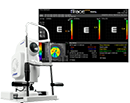Our Commitment to Innovation
ONGOING ADVANCEMENT AND THE iTRACE VISUAL ANALYSIS
The story of the iTrace is one of decades of research, testing, and a commitment to constant innovation. At the turn of the century, what would eventually become the modern iTrace was a tool used mainly by clinical professors and research scientists. Its unique view of ocular function made it a critical tool in establishing the data that brought new products from Alcon, Johnson & Johnson, and others to market.
Because the iTrace is the only tool on the market that uses proprietary Ray Tracing to get a truly objective simulation of functional vision, doctors ultimately realized the true potential of this unique scanning device. By the first decade of the 2000s, the iTrace became a critical tool for doctors that wanted to gain unprecedented insight into their patients’ vision.
With each new enhancement we have made to the iTrace over the last decade, Tracey Technologies reaffirms our commitment to doctors and their patients. Ensuring your patients’ quality of vision remains our top priority. Here’s how far the technology has come:
WHAT’S NEW IN iTRACE 7?
iTrace 7.0, called iTrace Prime, is yet another step forward for a device that doctors have trusted for many years to provide the most accurate and comprehensive information to make better decisions and provide better outcomes to their patients. iTrace Prime adds several new features, including:
The Prime Dashboard
The Prime Dashboard builds on the Dysfunctional Lens Index (DLI) introduced in Version 6.0 by adding the Corneal Performance Index (CPI) and Quality of Vision Index (QVI). This furthers the ability for physicians to understand the source of their patient’s vision loss by quantifying vision in the cornea, the lens, and total eye on objective numerical scales.
The Prime Dashboard also includes a section that combines an array of key metrics needed to plan surgery in a single, user-friendly display!
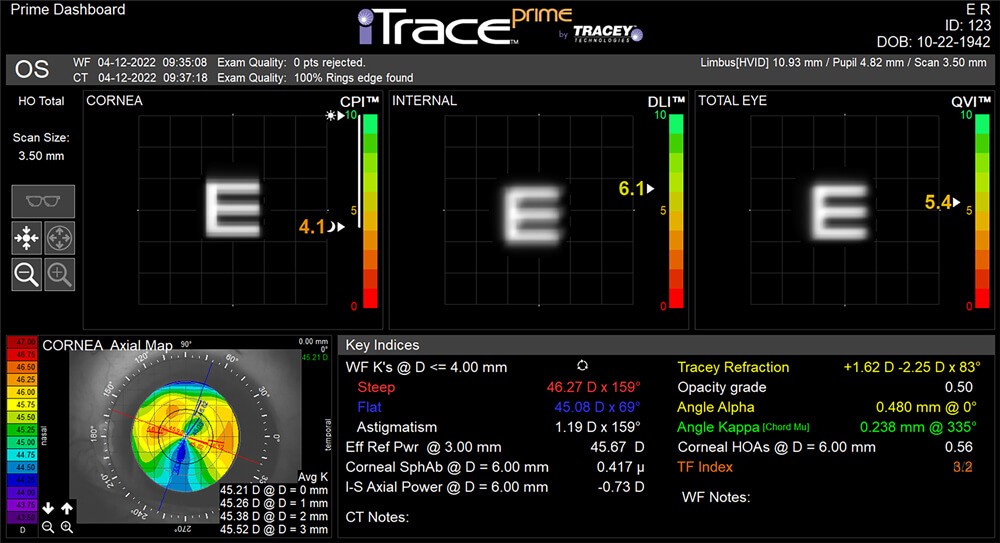
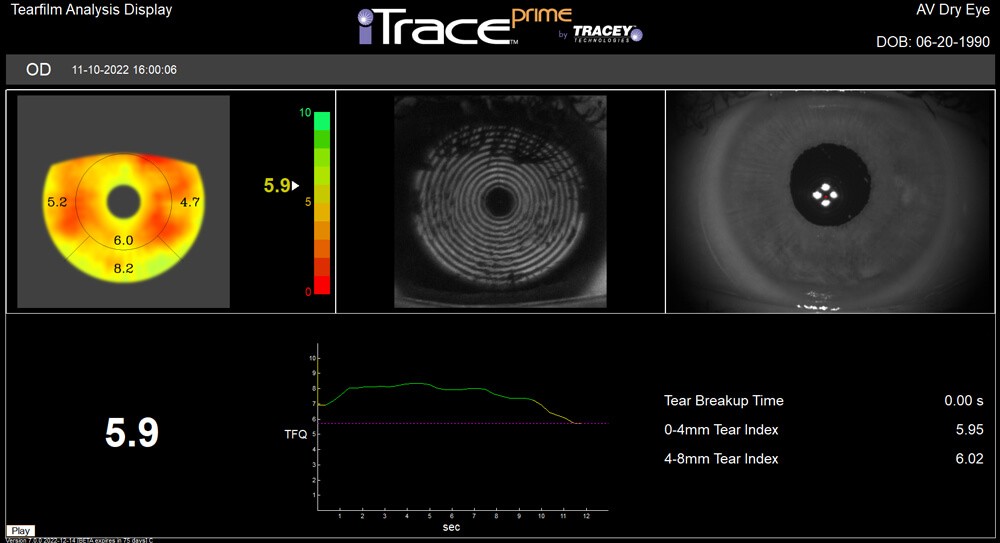
Tear Film Analysis
Tear film quality has been a confounding factor in cataract and refractive surgery outcomes for decades, but iTrace Prime gives physicians the tools to overcome it. In the Tear Film Analysis exam, the iTrace’s high-definition camera records the patient’s corneal surface for a 12-second period starting immediately after a blink, producing a map of the tear film deterioration and allowing users to visualize the areas where the tear film evaporates and where it stabilizes.
The tear film is analyzed using a proprietary assessment of the sharpness, shape, and continuity of the Placido-ring images and quantified using the Tear Film Index (TFI).
Exam Results Display and Tech Triage
For a long time, success with the iTrace meant having technicians who were well-trained to capture usable scans. Based on user feedback about a high rate of staff turnover, iTrace Prime solves for this contingency. The Exam Results display provides data about the quality of wavefront and corneal topography exams so that techs can be sure they acquired usable data, while the Tech Triage icon helps them narrow down areas to get more information about or confirm before the patient is out of the chair.
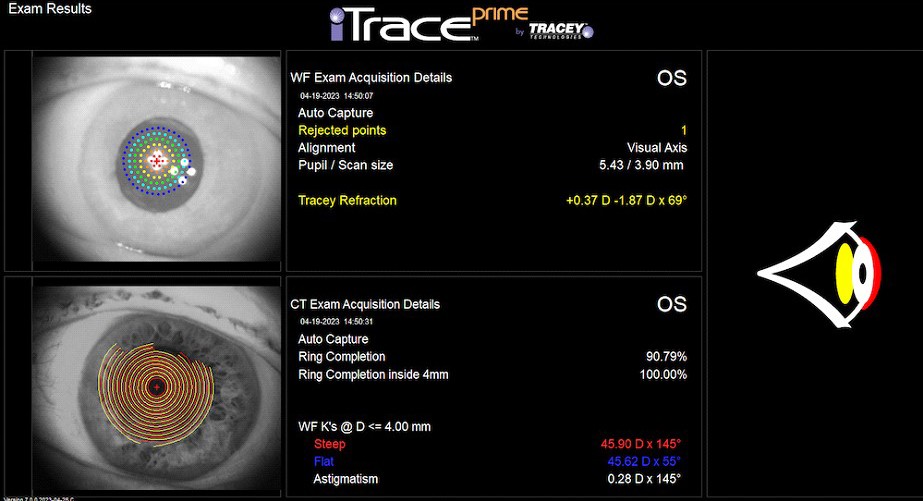
If you are using the iTrace without these powerful new capabilities, please contact us to upgrade your system to the latest version.
2021
The iTrace adds full DICOM compliance in Version 6.3, reducing data entry errors with managed work list import and making reports from a scan shareable on any connected system.
2016
Version 6.1 debuts the Toric Check feature, making it the first tool of its kind able to post-surgically evaluate the position of a toric lens without needing to dilate the eyes. The Toric Check calculates cross cylinder and verifies whether a toric IOL is off-axis or off-power after surgery without patient dilation.
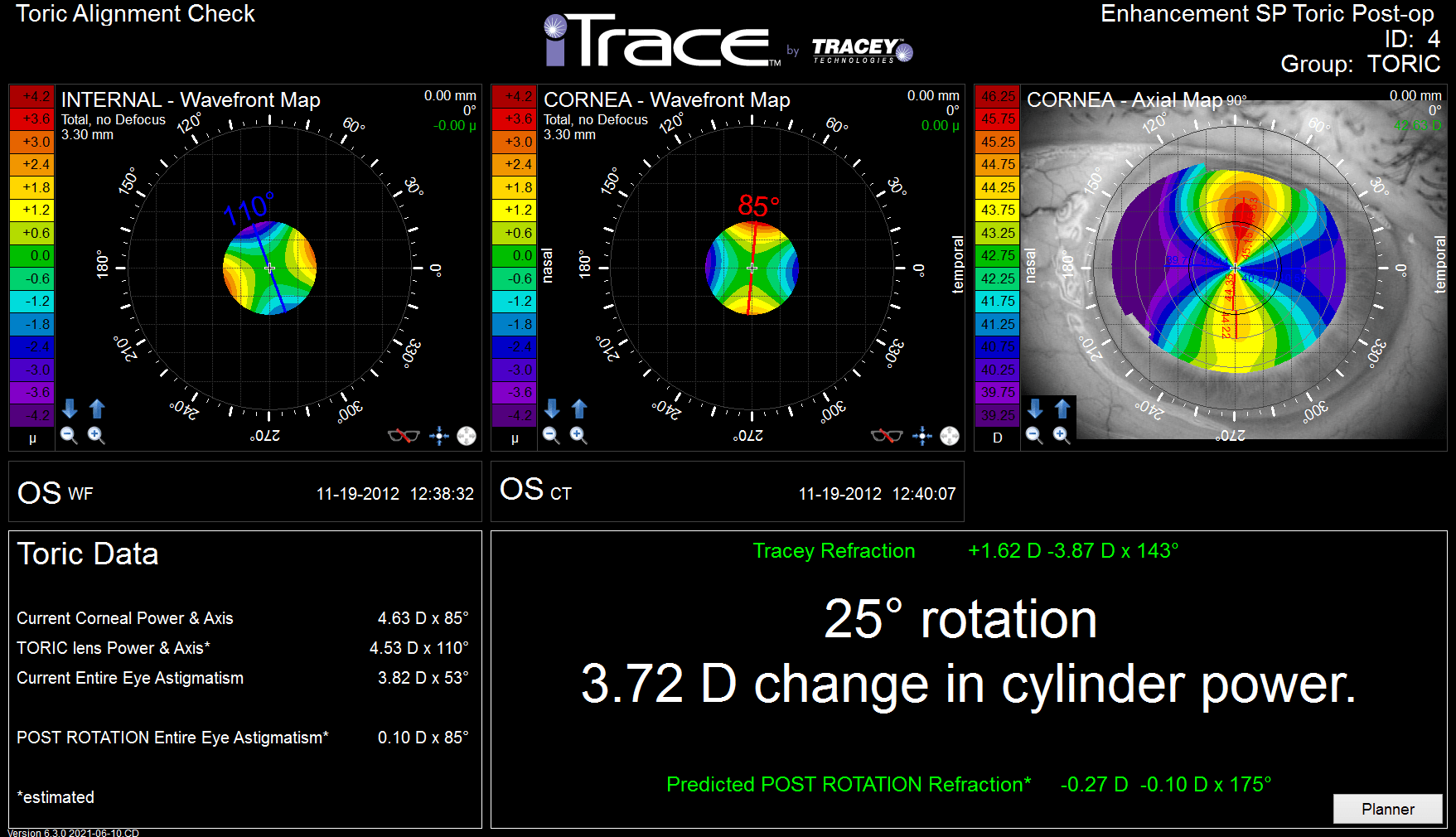
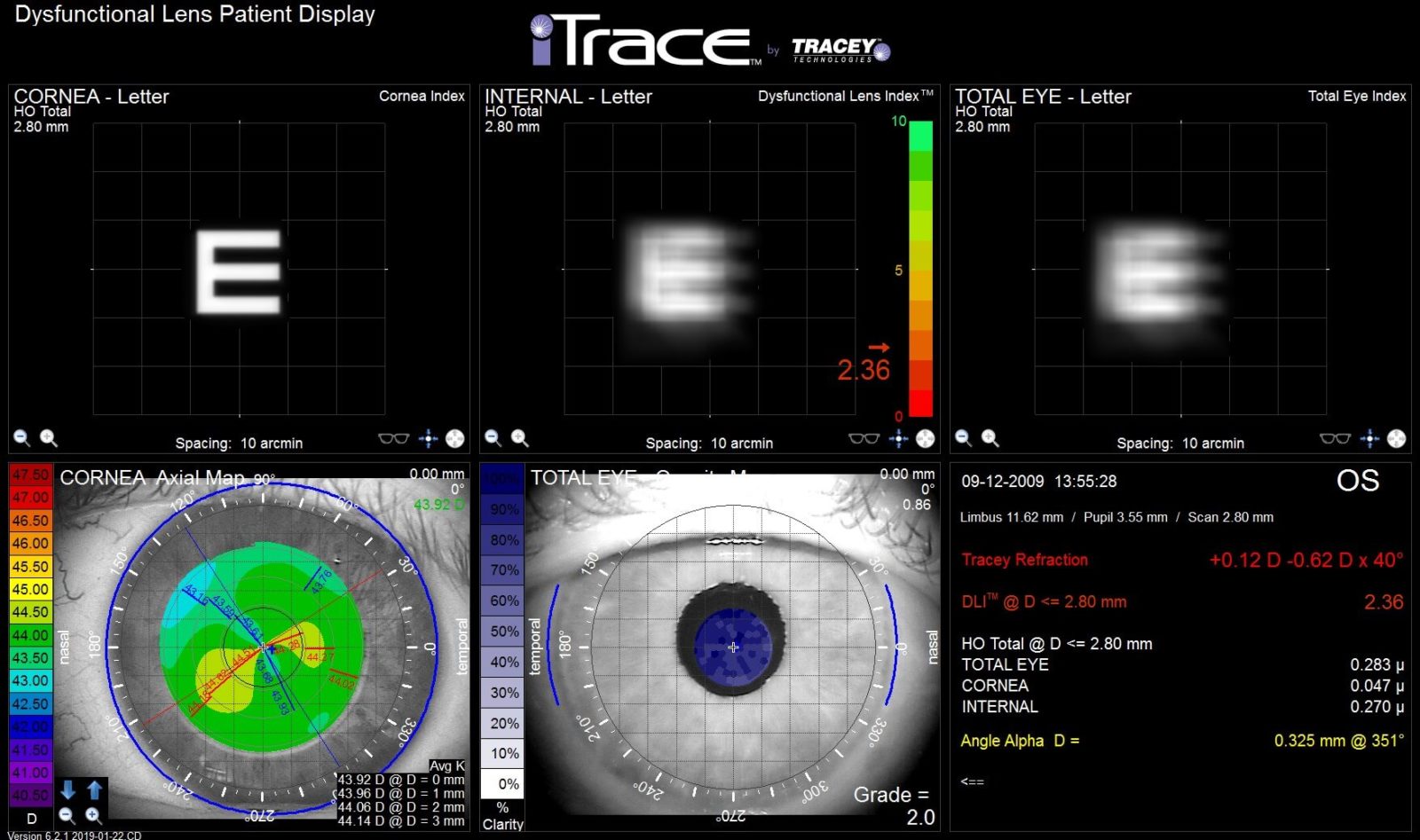
2015
iTrace 6.0 releases, expanding the support provided to physicians in diagnosing lens dysfunction with a groundbreaking new feature, the Dysfunctional Lens Index (DLI). The DLI greatly improves decision-making with confidence as doctors can now begin to isolate the cause of their patients’ vision loss.
2012
Display updates in Version 5.0 provide physicians with an easier way to navigate the vast array of data captured by the iTrace. The software debuts the first version of its now well-known surgical planning suite.
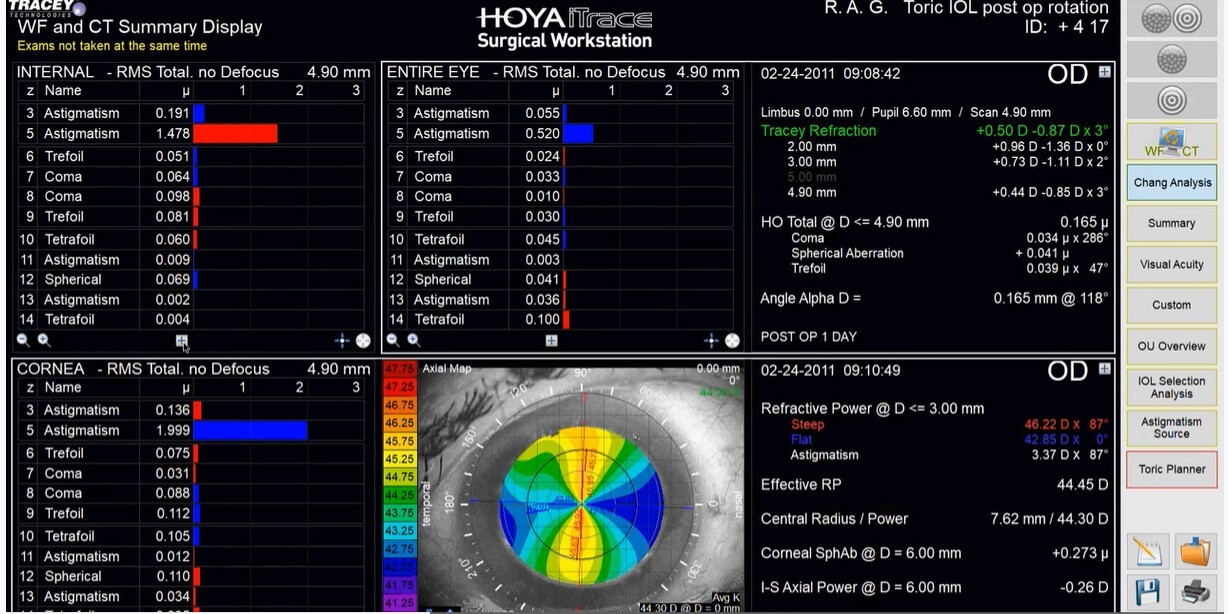
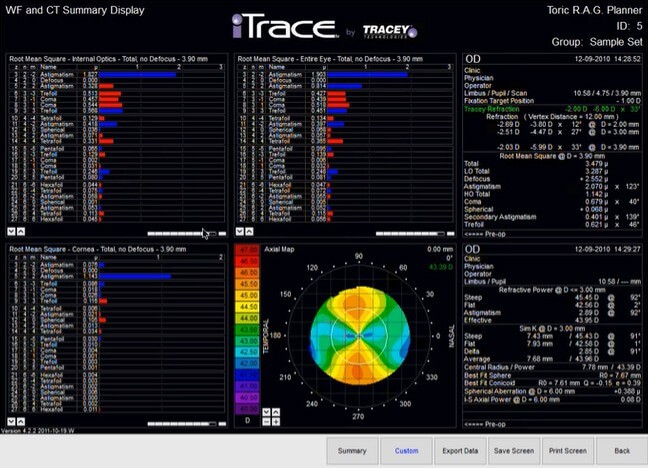
2008
Doctors around the world begin leveraging the power of diagnostic aberrometry in their practices as iTrace 4.0 makes this superior technology accessible to all physicians.
2000
Ray Tracing visual analysis is introduced to the optical industry and diagnostic aberrometry becomes the standard in the research community as the earliest version of the iTrace gains adoption. The iTrace becomes one of the most sought-after devices in research institutions when precise optical information is needed in clinical studies.
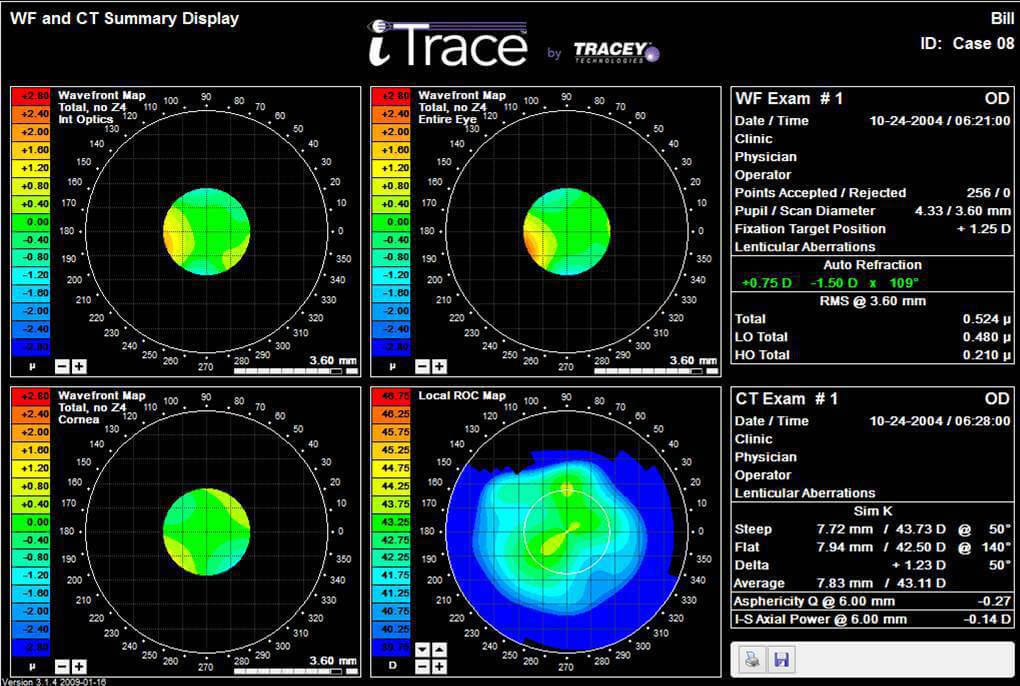
Want to Learn More? Request an iTrace Demo
We look forward to giving you an inside look at how the iTrace works. Simply fill in your preferred contact information and a member of the Tracey team will reach out to schedule your demo.
